Sustainability and Grid Reliability of Renewable Energy Expansion Projects in Saudi Arabia by 2030
Abstract
1. Introduction
1.1. Background and Motivation
1.2. Current Status and Literature Review
1.3. Research Gaps and Contributions
- The study focuses on enhancing renewable energy planning in Saudi Arabia in line with sustainability objectives, including gathering and processing weather data (e.g., GHI, wind speed, and temperature) to estimate solar and wind potential across various sites.
- The research evaluates the generation adequacy of renewable projects within the national grid, employing sequential Monte Carlo simulations to calculate key reliability indices (LOLE, LOEE, LOLF, and ENSINT).
- The study analyzes the impact of renewable energy projects on grid stability, providing insights that support Saudi Arabia’s transition to sustainable energy and inform future renewable deployments and strategic planning.
2. Overview of Renewable Energy Projects in KSA
2.1. Completed and Planned Projects
2.1.1. Sakaka PV Project
2.1.2. Doumat AlJandal Wind Farm Project
2.1.3. Mahd AlDahab PV Project
2.1.4. Alkahfah PV Project
2.1.5. Shoiba 1 and Shoiba 2 PV Projects
2.1.6. AlRass PV Project
3. Renewable Energy Estimation
3.1. Average Annual Potential
3.1.1. Solar Radiation Level
3.1.2. Wind Speed Levels
3.2. Energy Production Potential
3.2.1. Solar Potential
3.2.2. Wind Potential
4. Reliability Analysis
4.1. Test System
4.2. Simulation Process
4.2.1. Load Model
4.2.2. Generation Model
4.2.3. Risk Indices
4.3. Results and Analysis
5. Discussion and Future Research Directions
6. Conclusions
Author Contributions
Funding
Institutional Review Board Statement
Informed Consent Statement
Data Availability Statement
Conflicts of Interest
References
- Adelekan, O.A.; Ilugbusi, B.S.; Adisa, O.; Obi, O.C.; Awonuga, K.F.; Asuzu, O.F.; Ndubuisi, N.L. Energy Transition Policies: A Global Review of Shifts Towards Renewable Sources. Eng. Sci. Technol. J. 2024, 5, 272–287. [Google Scholar] [CrossRef]
- Rastegar, H.; Eweje, G.; Sajjad, A. The impact of environmental policy on renewable energy innovation: A systematic literature review and research directions. Sustain. Dev. 2024, 32, 3859–3876. [Google Scholar] [CrossRef]
- Musilek, P.; Hussain, A. Equity-oriented power sharing and demand response for enhancing green energy access in mixed communities. Energy Build. 2024, 308, 114029. [Google Scholar] [CrossRef]
- Jung, C. Recent Development and Future Perspective of Wind Power Generation. Energies 2024, 17, 5391. [Google Scholar] [CrossRef]
- Wang, Y.; Wang, R.; Tanaka, K.; Ciais, P.; Penuelas, J.; Balkanski, Y.; Sardans, J.; Hauglustaine, D.; Liu, W.; Xing, X.; et al. Accelerating the energy transition towards photovoltaic and wind in China. Nature 2023, 619, 761–767. [Google Scholar] [CrossRef]
- Tabassum, S.; Rahman, T.; Islam, A.U.; Rahman, S.; Dipta, D.R.; Roy, S.; Mohammad, N.; Nawar, N.; Hossain, E. Solar Energy in the United States: Development, Challenges and Future Prospects. Energies 2021, 14, 8142. [Google Scholar] [CrossRef]
- Wałachowska, A.; Ignasiak-Szulc, A. Comparison of Renewable Energy Sources in ‘New’ EU Member States in the Context of National Energy Transformations. Energies 2021, 14, 7963. [Google Scholar] [CrossRef]
- Aleluia, J.; Tharakan, P.; Chikkatur, A.P.; Shrimali, G.; Chen, X. Accelerating a clean energy transition in Southeast Asia: Role of governments and public policy. Renew. Sustain. Energy Rev. 2022, 159, 112226. [Google Scholar] [CrossRef]
- Stringer, T.; Joanis, M. Assessing energy transition costs: Sub-national challenges in Canada. Energy Policy 2022, 164, 112879. [Google Scholar] [CrossRef]
- Chomać-Pierzecka, E. Investment in Offshore Wind Energy in Poland and Its Impact on Public Opinion. Energies 2024, 17, 3912. [Google Scholar] [CrossRef]
- Rahimi, I.; Nikoo, M.R.; Gandomi, A.H. Techno-economic analysis for using hybrid wind and solar energies in Australia. Energy Strateg. Rev. 2023, 47, 101092. [Google Scholar] [CrossRef]
- Elshurafa, A.M.; Peerbocus, N. Electric vehicle deployment and carbon emissions in Saudi Arabia: A power system perspective. Electr. J. 2020, 33, 106774. [Google Scholar] [CrossRef]
- Saudi Vision 2030. Available online: https://www.vision2030.gov.sa/en (accessed on 4 November 2024).
- Almutairi, A. Plug-in electric vehicles and their impact on power generation availability: A real survey-based analysis in Saudi Arabia. Sustain. Cities Soc. 2021, 75, 103389. [Google Scholar] [CrossRef]
- Islam, M.T.; Ali, A. Sustainable green energy transition in Saudi Arabia: Characterizing policy framework, interrelations and future research directions. Next Energy 2024, 5, 100161. [Google Scholar] [CrossRef]
- Short, S.; Molini, A.; Santamarina, J.C.; Friedrich, L. COP26 Visions for a Net Zero Future—Regional Profile for the Arabian Peninsula. Camb. Open Engag. 2021. [Google Scholar] [CrossRef]
- Chen, W.; Castruccio, S.; Genton, M.G.; Crippa, P. Current and Future Estimates of Wind Energy Potential Over Saudi Arabia. J. Geophys. Res. Atmos. 2018, 123, 6443–6459. [Google Scholar] [CrossRef]
- Sakaka Solar Power Plant. Available online: https://www.vision2030.gov.sa/en/explore/projects/sakaka-solar-power-plant (accessed on 4 November 2024).
- The Dumat Al-Jandal Wind Farm Is Saudi Arabia’s First Wind Farm—Green Prophet. Available online: https://www.greenprophet.com/2024/05/dumat-al-jandal-wind-farm-saudi-arabia/ (accessed on 4 November 2024).
- NEOM Green Hydrogen Complex|Air Products. Available online: https://www.airproducts.com/energy-transition/neom-green-hydrogen-complex (accessed on 4 November 2024).
- Almutairi, A. Impact Assessment of Diverse EV Charging Infrastructures on Overall Service Reliability. Sustainability 2022, 14, 13295. [Google Scholar] [CrossRef]
- Hussain, M.S.; Cho, K.; Park, S.J. Resource Adequacy and Integration of Renewables in Light of US, EU, and Pakistan’s Evolving Power Sector. Energies 2024, 17, 5051. [Google Scholar] [CrossRef]
- Pouresmaieli, M.; Ataei, M.; Qarahasanlou, A.N.; Barabadi, A. Integration of renewable energy and sustainable development with strategic planning in the mining industry. Results Eng. 2023, 20, 101412. [Google Scholar] [CrossRef]
- Cao, K.; Xiong, H.; Ye, C.; Jiang, K.; Yu, H.; Wang, D.; Liu, J. Collaborative Self-Standby Adjustment for Photovoltaics with Rotor Inertial Power Source Control Strategy in Weak Power Grids. Energies 2025, 18, 907. [Google Scholar] [CrossRef]
- Ruban, N.; Rudnik, V.; Askarov, A.; Maliuta, B. Frequency control by the PV station in electric power systems with hydrogen energy storage. Int. J. Hydrogen Energy 2023, 48, 28262–28276. [Google Scholar] [CrossRef]
- Ministry of Investment Saudi Arabia. Renewable Energy Brochure. Invest Saudi. 2024. Available online: https://misa.gov.sa/app/uploads/2024/03/investsaudi-renewable-energy-brochure.pdf (accessed on 12 January 2025).
- Al-Gahtani, S.F. Saudi Arabia’s Journey toward a Renewable Future. Energies 2024, 17, 2444. [Google Scholar] [CrossRef]
- Acwa Power|Sakaka PV IPP. Available online: https://acwapower.com/en/projects/sakaka-pv-ipp/ (accessed on 4 November 2024).
- Masdar|Dumat Al Jandal. Available online: https://masdar.ae/en/renewables/our-projects/dumat-al-jandal (accessed on 4 November 2024).
- Project Mahad Al-Dahab—Gudnus. Available online: https://gudnus.com/en/portfolio_page/project-mahad-al-dahab/ (accessed on 4 November 2024).
- Yang, C.; Wu, Z.; Li, X.; Fars, A. Risk-constrained stochastic scheduling for energy hub: Integrating renewables. demand response, and electric vehicles. Energy 2024, 288, 129680. [Google Scholar] [CrossRef]
- Acwa Power|Shuaibah PV IPP. Available online: https://acwapower.com/en/projects/shuaibah-pv-ipp/ (accessed on 4 November 2024).
- Acwa Power|Ar Rass PV IPP. Available online: https://acwapower.com/en/projects/ar-rass-pv-ipp/ (accessed on 4 November 2024).
- NOMAC|Sakaka PV IPP. Available online: https://www.nomac.com/en/our-operations/nomac-globally/sakaka-pv-ipp/ (accessed on 4 November 2024).
- Offshore Wind Turbines|Vestas. Available online: https://www.vestas.com/en/energy-solutions/offshore-wind-turbines (accessed on 4 November 2024).
- Abud, T.P.; Augusto, A.A.; Fortes, M.Z.; Maciel, R.S.; Borba, B.S.M.C. State of the Art Monte Carlo Method Applied to Power System Analysis with Distributed Generation. Energies 2023, 16, 394. [Google Scholar] [CrossRef]
- Guimarães, I.O.; da Silva, A.M.L.; Nascimento, L.C.; Fotuhi-Firuzabad, M. Reliability assessment of distribution grids with DG via quasi-sequential Monte Carlo simulation. Electr. Power Syst. Res. 2024, 229, 110122. [Google Scholar] [CrossRef]
- Almutairi, A. Evaluating Wind Power Generating Capacity Adequacy Using MCMC Time Series Model. Master’s Thesis, University of Waterloo, Waterloo, ON, Canada, 2014. [Google Scholar]
- Billinton, R.; Kumar, S.; Chowdhury, N.; Chu, K.; Debnath, K.; Goel, L.; Khan, E.; Kos, P.; Nourbakhsh, G.; Oteng-Adjei, J. A reliability test system for educational purposes—Basic data. IEEE Trans. Power Syst. 1989, 4, 1238–1244. [Google Scholar] [CrossRef]
- Almutairi, A.; Aljohani, T.M. Reliability-driven time-of-use tariffs for efficient plug-in electric vehicle integration. Sustain. Cities Soc. 2024, 107, 105463. [Google Scholar] [CrossRef]
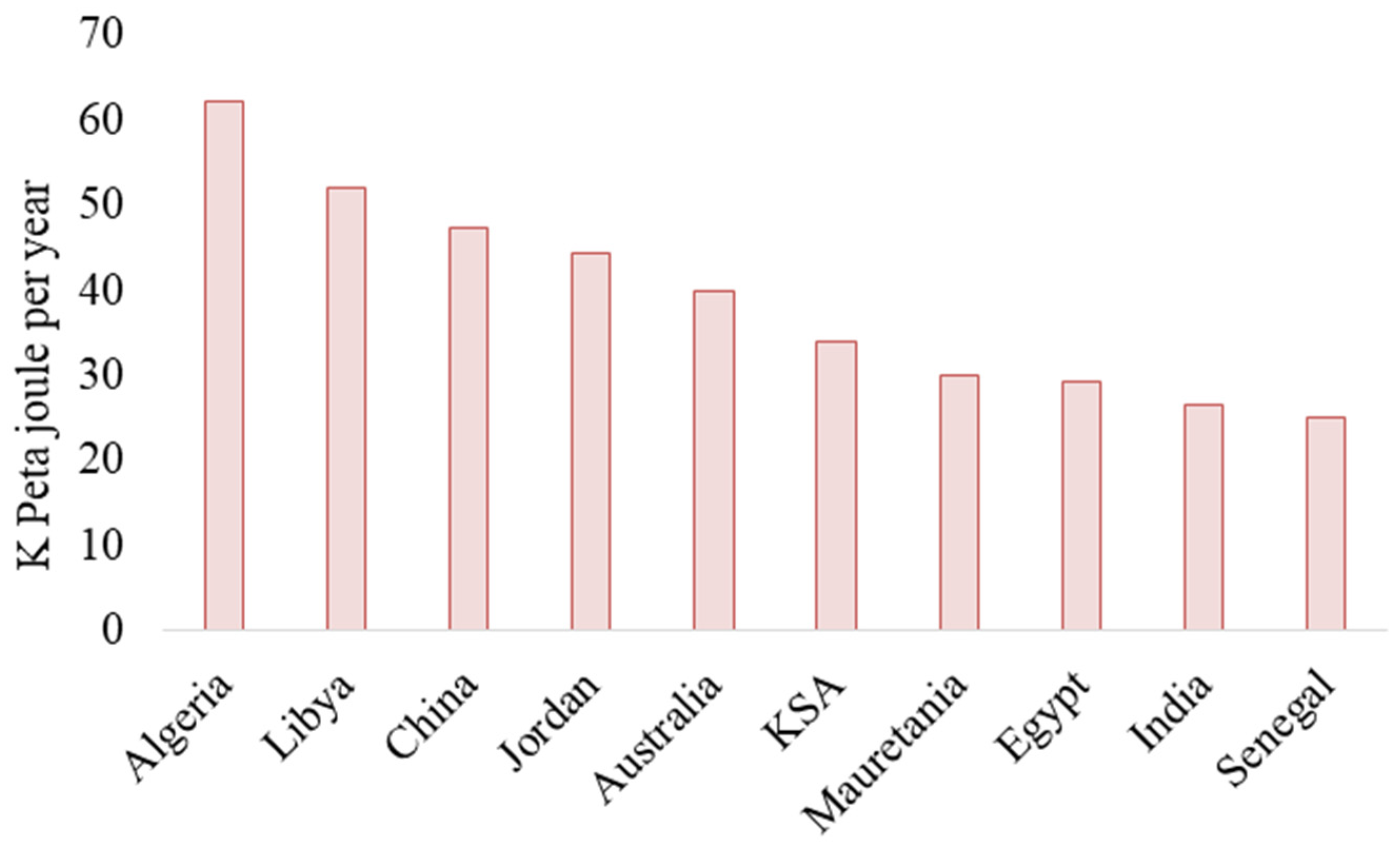
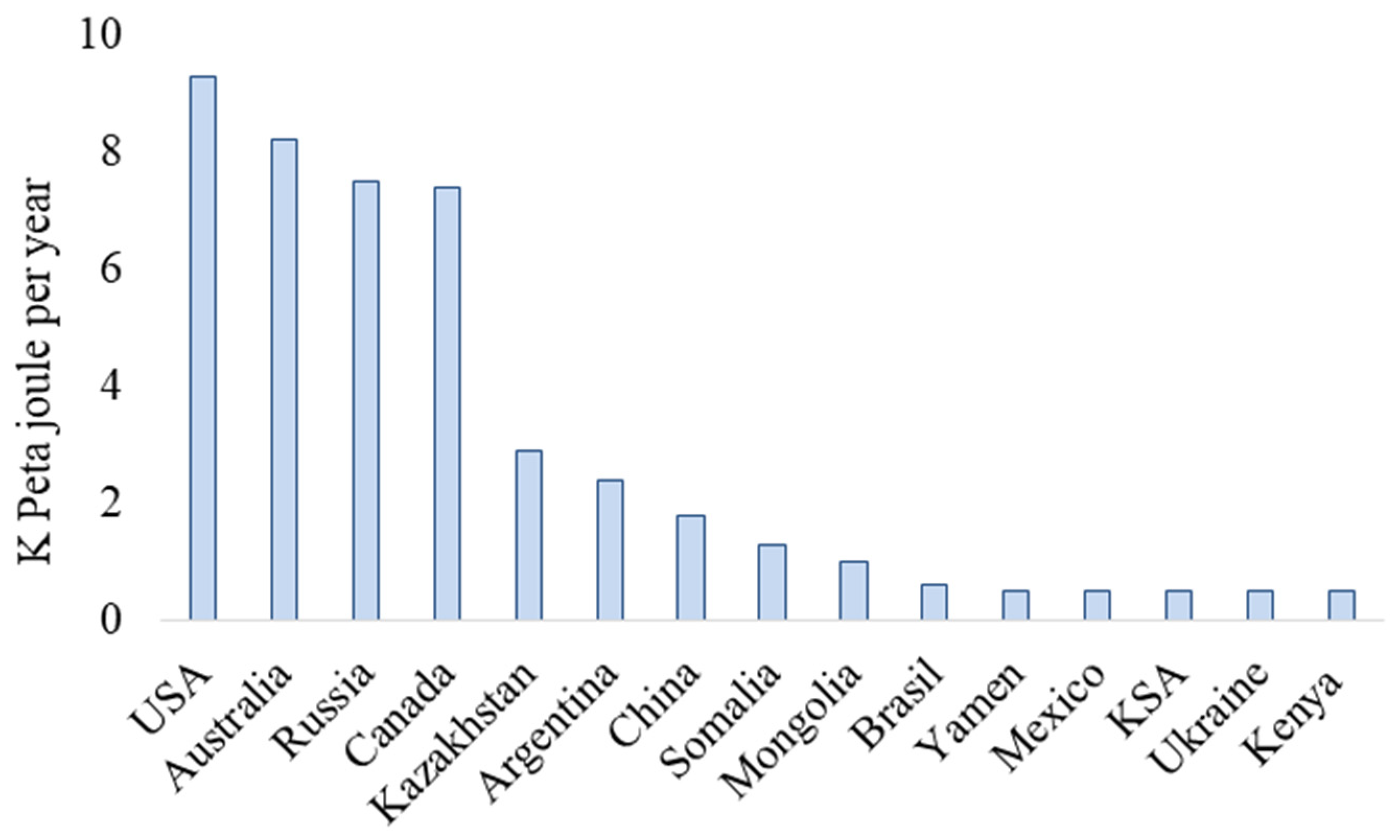
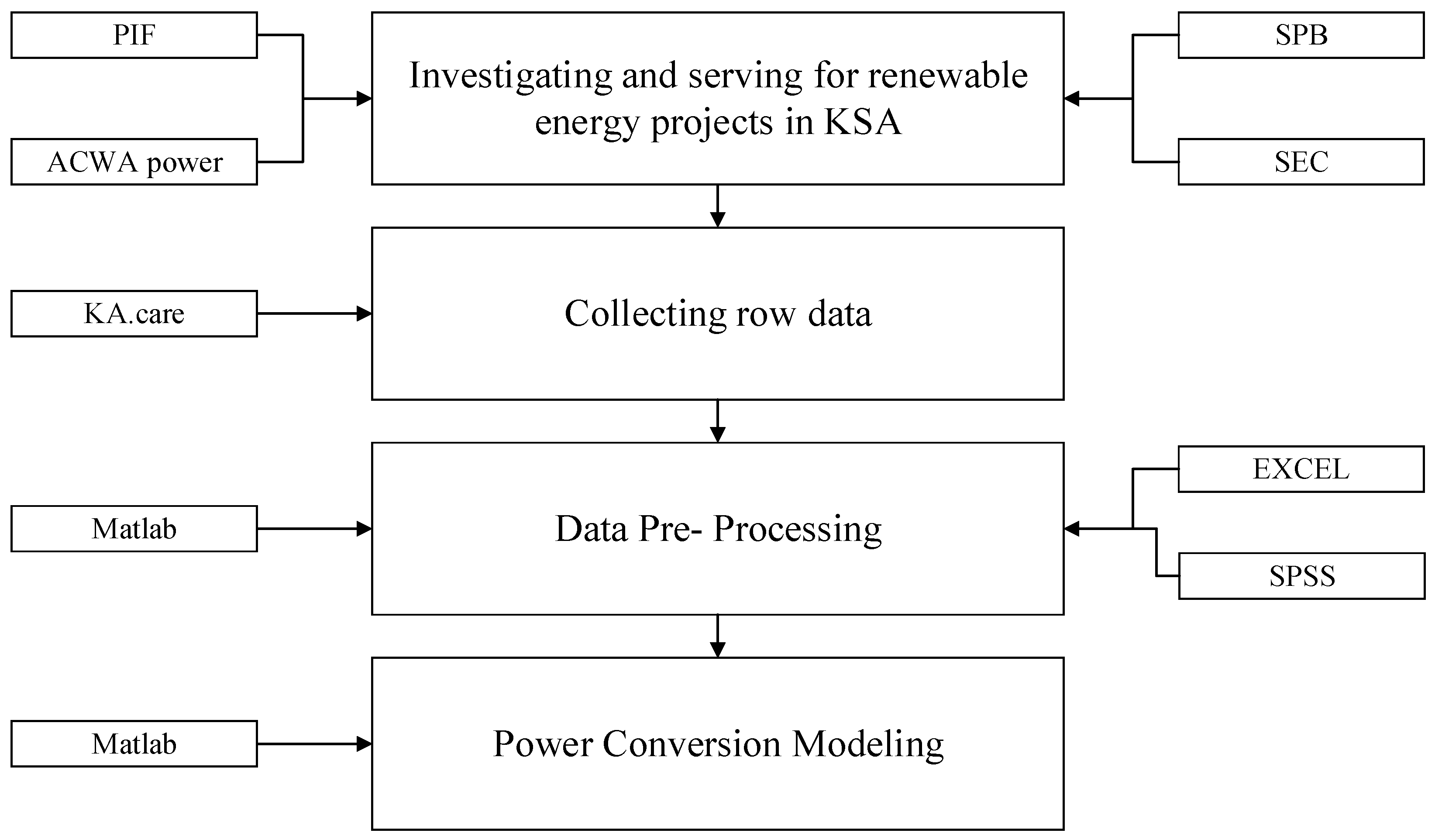
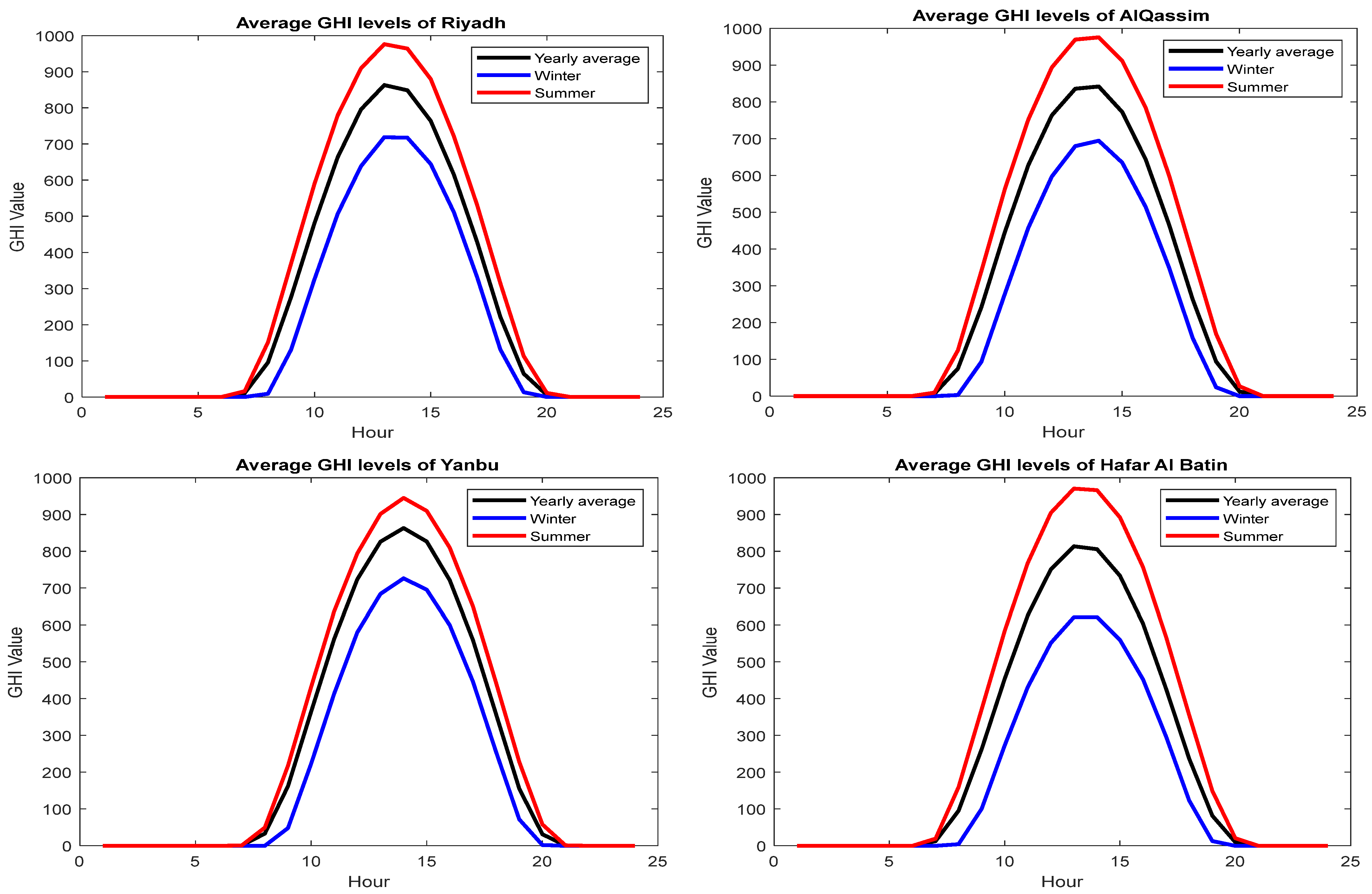

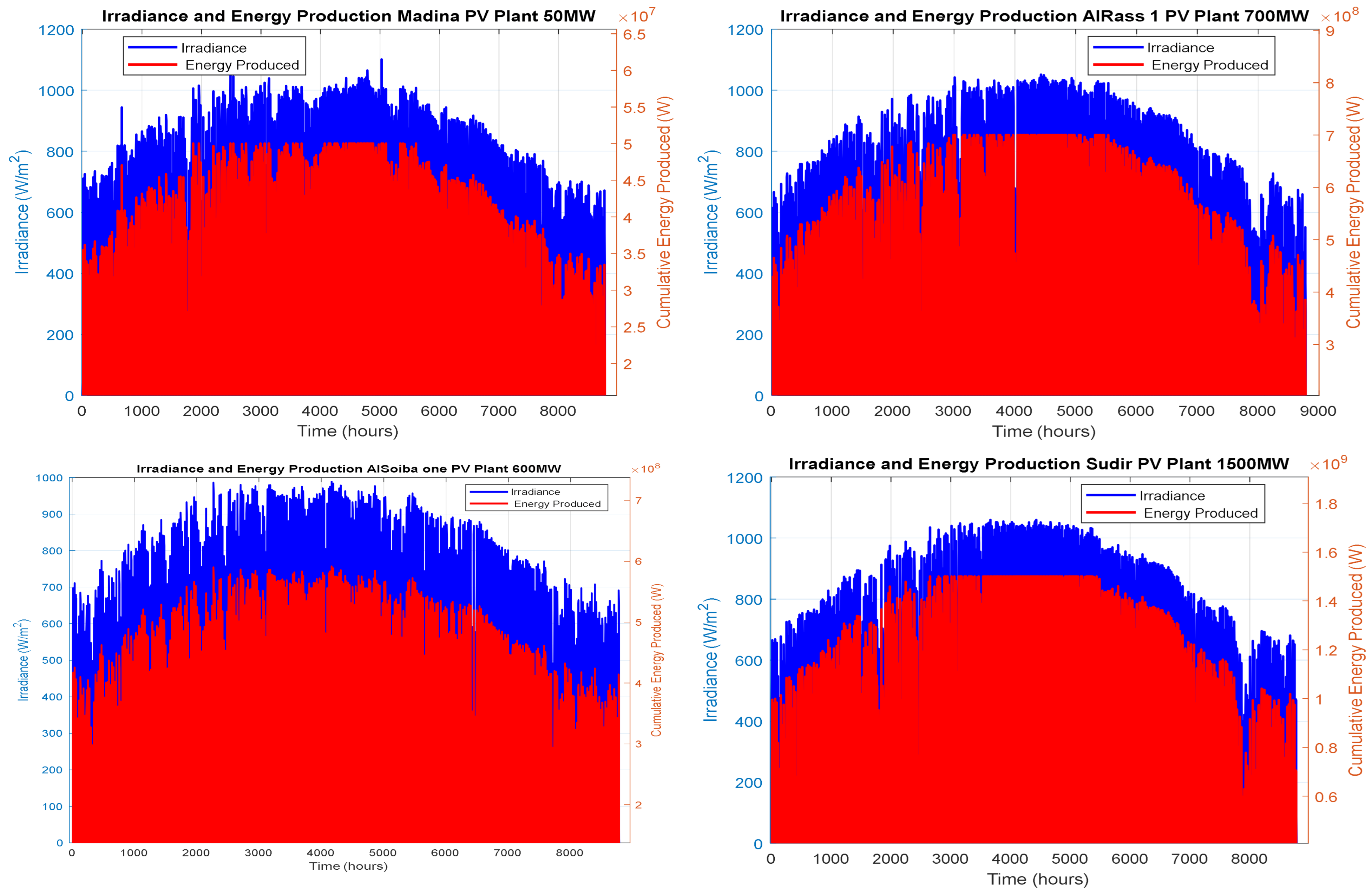
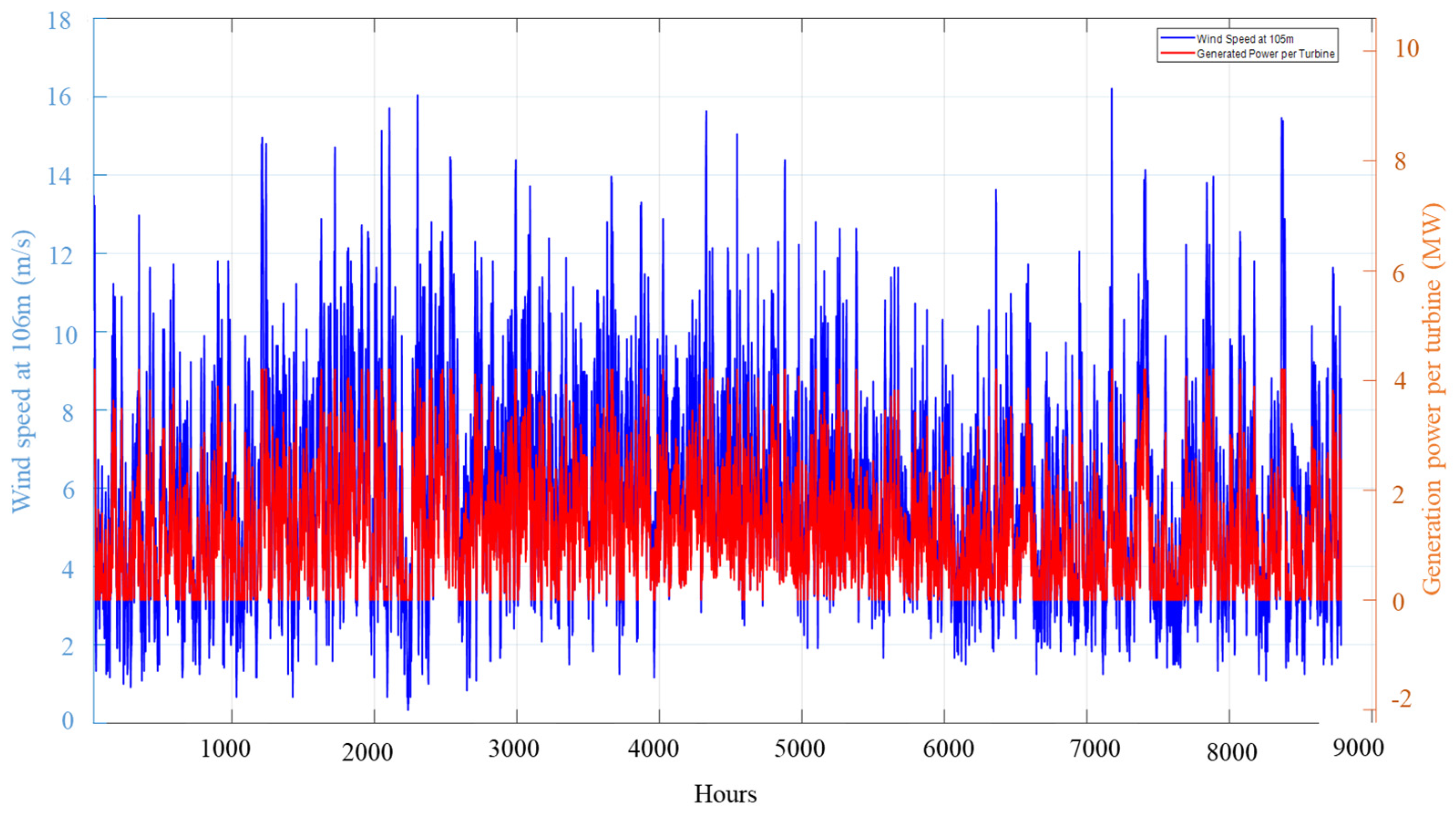
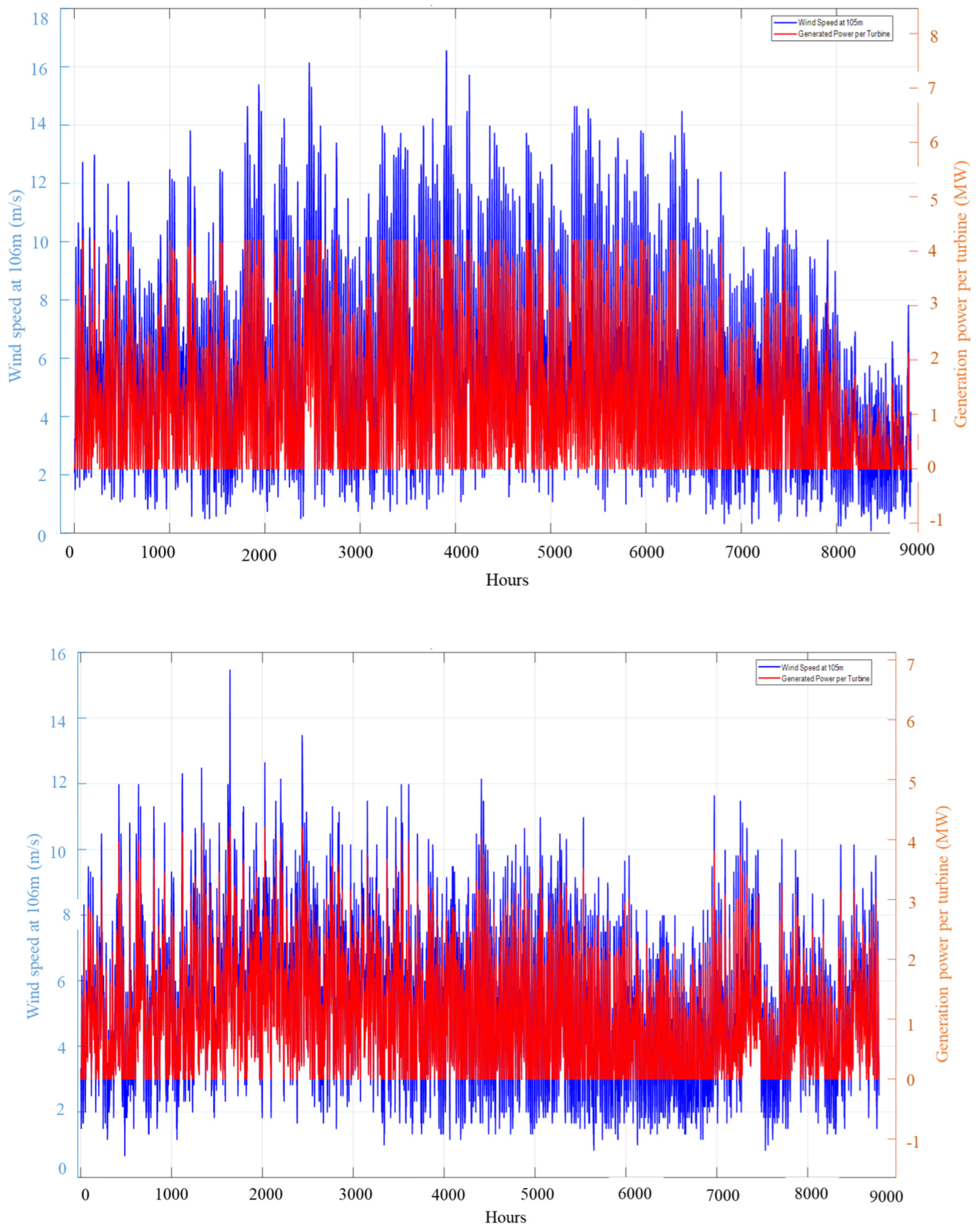
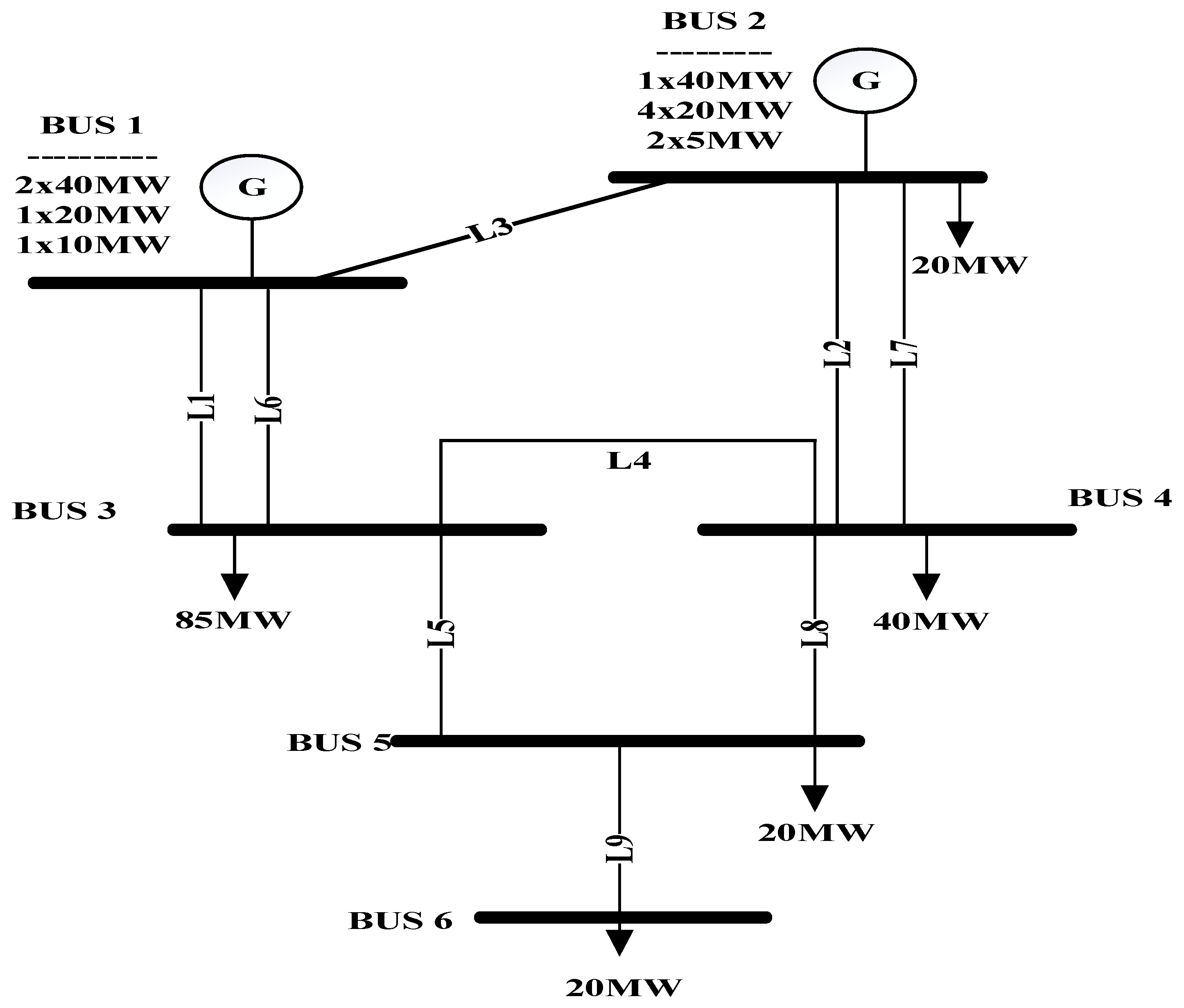
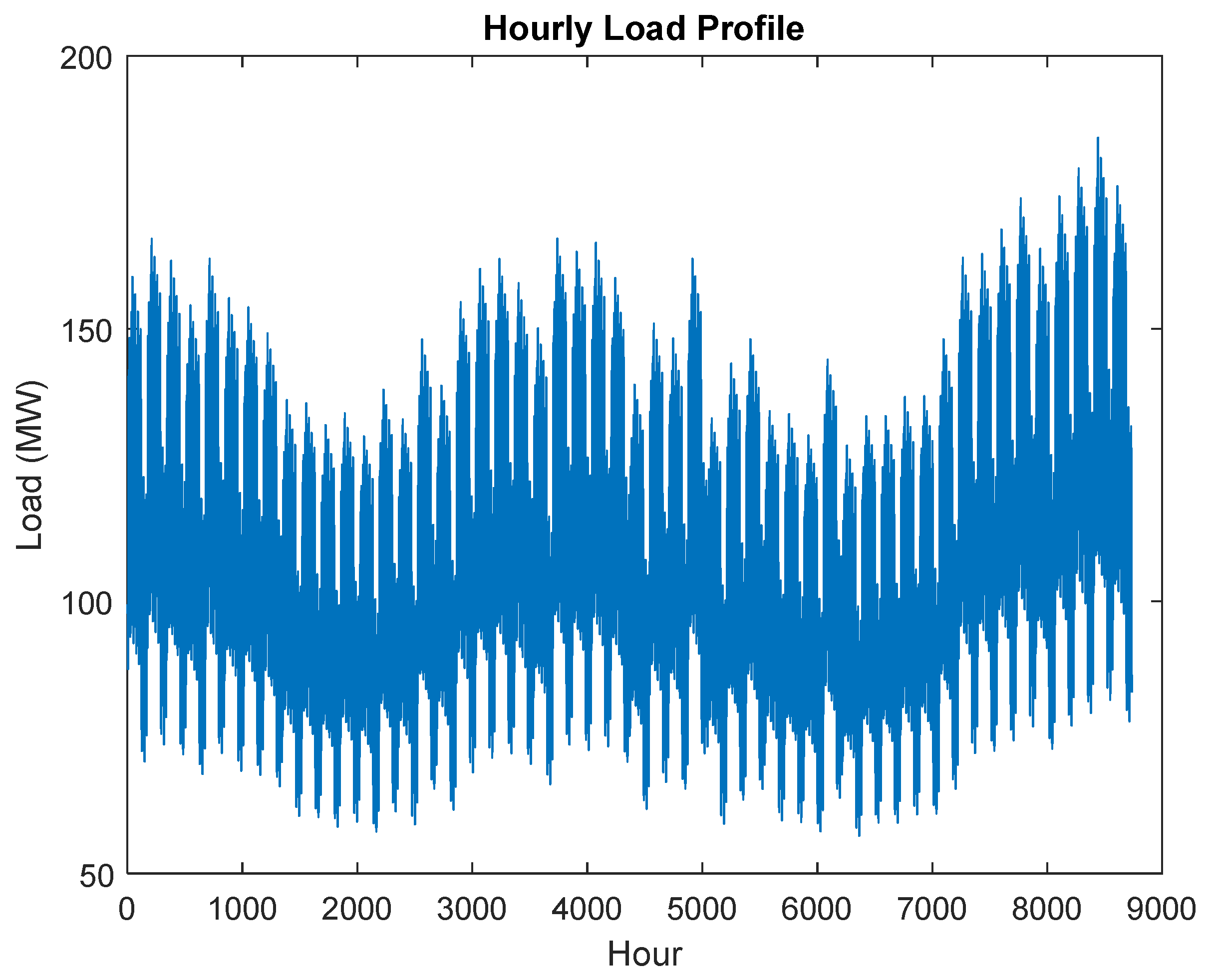
| Project Number | Project Name | Energy Type | Capacity (MW) |
|---|---|---|---|
| 1 | Sakaka | PV | 300 |
| 2 | Rafha | PV | 20 |
| 3 | Quriyat | PV | 200 |
| 4 | Tabarjal | PV | 400 |
| 5 | Waad AlShimal | WIND | 500 |
| 6 | Doumat AlJandal | WIND | 400 |
| 7 | Mahd AlDahab | PV | 20 |
| 8 | alHinakiah One | PV | 1100 |
| 9 | alHinakiah Two | PV | 400 |
| 10 | AlKahfah | PV | 1400 |
| 11 | AlMasa | PV | 1000 |
| 12 | Shoiba One | PV | 600 |
| 13 | Shoiba Two | PV | 2060 |
| 14 | Jeddah | PV | 300 |
| 15 | Rabigh One | PV | 300 |
| 16 | Rabigh Two | PV | 300 |
| 17 | Saad One | PV | 300 |
| 18 | Saad Two | PV | 1125 |
| 19 | AlGhat | WIND | 600 |
| 20 | Sudir | PV | 1500 |
| 21 | AlRass One | PV | 700 |
| 22 | AlRass Two | PV | 2000 |
| 23 | Yanbu | WIND | 700 |
| 24 | Madina | PV | 50 |
| 25 | WadiAlDawasir | PV | 120 |
| 26 | AlSadawi | PV | 2000 |
| 27 | Layla | PV | 91 |
| 28 | Red Sea | PV | 1200 |
| Parameter | Sub-Parameter | Value |
|---|---|---|
| Model | - | JKM320P |
| Technology | Type | Poly Crystalline |
| Module Peak Power | 320 Wp | |
| Open Circuit Voltage, Voc, V | 46.4 V | |
| Standard Test Conditions, STC | Short Circuit current, ISC, A | 9.05 A |
| Maximum Voltage, Vmp, V | 37.40 V | |
| Maximum Current, Imp, A | 8.56 A | |
| Fill Factor | 76.20% | |
| Module Efficiency | 16.50% | |
| Temperature coefficient of Pmax | −0.40%/°C | |
| Parameter | Value |
|---|---|
| Manufacturer | Vestas (Aarhus, Denmark) |
| Type | Vestas V150-4.2 MW 50 Hz |
| Mode | P01 |
| Rated Power | 4200 kW |
| Turbine serial no. | 228051 |
| Hub-height above ground | 130 m |
| Rotor diameter | 150 m |
| Distance: middle of tower to middle of blade flange | 4.5 m |
| Gearbox type | ZF, EH1052A |
| Generator type | Vestas, 3 Phase IG, VND DASG 560/6M |
| Rotor blades | Vestas Wind Systems A/S, Vestas 73.65 m |
| Blade additional components | Serrated trailing edges |
| Power control (pitch/stall) | Pitch |
| NAME | CI (MW) | D | DNSINST | ENSINT | LOEE | LOLE | LOLF |
|---|---|---|---|---|---|---|---|
| RBTS | 4.994149 | 4.914966 | 44.88368 | 9.205642 | 1.0243 | 0.2051 | |
| Sakaka | 30 | 2.986718 | 4.761892 | 25.88211 | 4.676897 | 0.5397 | 0.1807 |
| 60 | 2.669365 | 4.649016 | 24.24778 | 3.894194 | 0.4287 | 0.1606 | |
| 90 | 2.349966 | 5.388132 | 22.71643 | 3.323414 | 0.3438 | 0.1463 | |
| Rafha | 30 | 3.142857 | 4.842287 | 28.63115 | 5.230911 | 0.5742 | 0.1827 |
| 60 | 2.642556 | 4.655558 | 24.48623 | 4.062266 | 0.4384 | 0.1659 | |
| 90 | 2.356098 | 5.548341 | 22.55982 | 3.237334 | 0.3381 | 0.1435 | |
| Quriyat | 30 | 3.17982 | 4.975205 | 30.81557 | 5.466683 | 0.5641 | 0.1774 |
| 60 | 2.589841 | 4.532415 | 22.27057 | 3.507614 | 0.4079 | 0.1575 | |
| 90 | 2.345748 | 5.364778 | 21.5679 | 3.069113 | 0.3338 | 0.1423 | |
| Tabarjal | 30 | 3.125984 | 4.805532 | 28.85852 | 5.131045 | 0.5558 | 0.1778 |
| 60 | 2.65656 | 4.674117 | 24.14912 | 4.141575 | 0.4556 | 0.1715 | |
| 90 | 2.36633 | 5.493511 | 21.86075 | 3.246321 | 0.3514 | 0.1485 | |
| Mahd AlDahab | 30 | 2.677807 | 4.366655 | 23.19977 | 4.442755 | 0.5128 | 0.1915 |
| 60 | 2.099757 | 5.066566 | 17.75568 | 2.919033 | 0.3452 | 0.1644 | |
| 90 | 1.987325 | 5.207146 | 17.38938 | 2.606669 | 0.2979 | 0.1499 | |
| Alhinakiah one | 30 | 2.753143 | 4.643417 | 24.82771 | 4.344849 | 0.4818 | 0.175 |
| 60 | 2.184211 | 4.939707 | 19.28224 | 3.22399 | 0.3652 | 0.1672 | |
| 90 | 2.032258 | 5.348638 | 17.37403 | 2.423678 | 0.2835 | 0.1395 | |
| Alhinakiah two | 30 | 2.678845 | 4.541725 | 23.54033 | 3.994794 | 0.4546 | 0.1697 |
| 60 | 2.1 | 4.809712 | 17.69739 | 2.654609 | 0.315 | 0.315 | |
| 90 | 2.081789 | 5.620253 | 19.87212 | 3.109987 | 0.3258 | 0.1565 | |
| Alkahfah | 30 | 2.80402 | 4.757255 | 25.32033 | 4.534871 | 0.5022 | 0.1791 |
| 60 | 2.378116 | 5.260928 | 24.12934 | 3.969277 | 0.3912 | 0.1645 | |
| 90 | 1.983075 | 5.265626 | 15.77222 | 2.236501 | 0.2812 | 0.1418 | |
| AlMasa | 30 | 2.787826 | 4.544256 | 25.02822 | 4.317369 | 0.4809 | 0.1725 |
| 60 | 2.300306 | 5.046317 | 21.12569 | 3.454051 | 0.3761 | 0.1635 | |
| 90 | 2.087066 | 5.382204 | 18.83279 | 2.984997 | 0.3308 | 0.1585 | |
| Shoiba One | 30 | 2.734428 | 4.56952 | 24.19266 | 4.272424 | 0.4829 | 0.1766 |
| 60 | 2.184262 | 5.016889 | 19.0928 | 2.911652 | 0.3331 | 0.1525 | |
| 90 | 2.066781 | 6.362751 | 18.56957 | 2.168926 | 0.2414 | 0.1168 | |
| Shoiba Two | 30 | 2.653017 | 4.432701 | 23.13387 | 4.293647 | 0.4924 | 0.1856 |
| 60 | 2.29914 | 5.120657 | 21.84279 | 3.300446 | 0.3474 | 0.1511 | |
| 90 | 1.934265 | 6.029225 | 16.57603 | 2.017302 | 0.2354 | 0.1217 | |
| Jeddah | 30 | 2.731303 | 4.315463 | 24.69448 | 4.622807 | 0.5113 | 0.1872 |
| 60 | 2.298935 | 5.051233 | 21.09275 | 3.168131 | 0.3453 | 0.1502 | |
| 90 | 1.987988 | 6.079867 | 17.45155 | 2.324547 | 0.2648 | 0.1332 | |
| Rabigh One | 30 | 2.417309 | 4.461878 | 19.38621 | 3.270453 | 0.4078 | 0.1687 |
| 60 | 2.212195 | 4.894609 | 19.71965 | 3.234022 | 0.3628 | 0.164 | |
| 90 | 2.081954 | 6.514252 | 19.24481 | 2.324773 | 0.2515 | 0.1208 | |
| Rabigh Two | 30 | 2.648633 | 4.580811 | 23.716 | 4.16453 | 0.4651 | 0.1756 |
| 60 | 2.2 | 4.929288 | 19.52724 | 2.968141 | 0.3344 | 0.152 | |
| 90 | 2.02717 | 6.311944 | 17.94559 | 2.377791 | 0.2686 | 0.1325 | |
| Saad One | 30 | 2.941514 | 4.93582 | 29.17826 | 5.088689 | 0.513 | 0.1744 |
| 60 | 2.458333 | 4.757371 | 21.43469 | 3.446698 | 0.3953 | 0.1608 | |
| 90 | 2.29255 | 5.66847 | 21.66061 | 3.168947 | 0.3354 | 0.1463 | |
| Saad Two | 30 | 2.798216 | 4.817981 | 23.76363 | 4.263196 | 0.502 | 0.1794 |
| 60 | 2.448916 | 4.577374 | 22.39531 | 3.616843 | 0.3955 | 0.1615 | |
| 90 | 2.305939 | 5.646492 | 20.79966 | 3.01179 | 0.3339 | 0.1448 | |
| Sudir | 30 | 2.77814 | 4.514425 | 24.34175 | 4.476448 | 0.5109 | 0.1839 |
| 60 | 2.395657 | 5.037301 | 22.62988 | 3.752034 | 0.3972 | 0.1658 | |
| 90 | 2.171657 | 5.521199 | 20.31033 | 3.052642 | 0.3264 | 0.1503 | |
| AlRass One | 30 | 2.80436 | 4.788836 | 25.01335 | 4.589951 | 0.5146 | 0.1835 |
| 60 | 2.345761 | 4.809997 | 21.00356 | 3.492892 | 0.3901 | 0.1663 | |
| 90 | 2.156499 | 5.583292 | 19.88464 | 2.998604 | 0.3252 | 0.1508 | |
| AlRass Two | 30 | 2.71646 | 4.687851 | 22.85204 | 4.053952 | 0.4819 | 0.1774 |
| 60 | 2.324807 | 4.576877 | 20.74374 | 3.487023 | 0.3908 | 0.1681 | |
| 90 | 2.119497 | 5.572055 | 19.54363 | 2.796694 | 0.3033 | 0.1431 | |
| Madina | 30 | 2.768091 | 4.40172 | 25.41738 | 4.46075 | 0.4858 | 0.1755 |
| 60 | 2.111041 | 5.131926 | 17.52175 | 2.777197 | 0.3346 | 0.1585 | |
| 90 | 2.049413 | 5.500514 | 18.71461 | 3.029895 | 0.3318 | 0.1619 | |
| WadiAlDawasir | 30 | 2.624086 | 4.364111 | 23.32585 | 4.145004 | 0.4663 | 0.1777 |
| 60 | 2.289651 | 5.028973 | 21.69476 | 3.542754 | 0.3739 | 0.1633 | |
| 90 | 2.057692 | 5.54631 | 18.56898 | 2.413967 | 0.2675 | 0.13 | |
| AlSadawi | 30 | 2.922142 | 4.575217 | 26.44041 | 4.788358 | 0.5292 | 0.1811 |
| 60 | 2.491599 | 4.931046 | 23.15658 | 3.721263 | 0.4004 | 0.1607 | |
| 90 | 2.289347 | 5.890661 | 21.25047 | 3.091944 | 0.3331 | 0.1455 | |
| Layla | 30 | 2.672113 | 4.331021 | 22.61298 | 4.013803 | 0.4743 | 0.1775 |
| 60 | 2.309669 | 5.05217 | 20.75151 | 3.069149 | 0.3416 | 0.1479 | |
| 90 | 2.197115 | 5.605279 | 20.58378 | 2.996998 | 0.3199 | 0.1456 | |
| Red Sea | 30 | 2.618255 | 4.619257 | 22.89541 | 3.988381 | 0.4561 | 0.1742 |
| 60 | 2.239708 | 5.212128 | 20.12781 | 3.031249 | 0.3373 | 0.1506 | |
| 90 | 2.062758 | 6.488719 | 18.96678 | 2.296877 | 0.2498 | 0.1211 |
| Project | CI (MW) | D | DNSINST | ENSINT | LOEE | LOLE | LOLF |
|---|---|---|---|---|---|---|---|
| RBTS | 4.994149 | 4.914966 | 44.88368 | 9.205642 | 1.0243 | 0.2051 | |
| Waad AlShimal | 30 | 3.795455 | 5.026138 | 34.21653 | 4.064923 | 0.4509 | 0.1188 |
| 60 | 2.941292 | 5.277538 | 26.3325 | 2.691181 | 0.3006 | 0.1022 | |
| 90 | 2.658889 | 5.984268 | 26.14721 | 2.353249 | 0.2393 | 0.09 | |
| Doumat AlJandal | 30 | 3.84089 | 4.959299 | 35.20673 | 4.270576 | 0.4659 | 0.1213 |
| 60 | 3.124869 | 5.448135 | 28.86731 | 2.751054 | 0.2978 | 0.0953 | |
| 90 | 2.518214 | 5.705097 | 21.76991 | 1.852619 | 0.2143 | 0.0851 | |
| Yanbu | 30 | 4.432872 | 5.235267 | 40.57095 | 4.98617 | 0.5448 | 0.1229 |
| 60 | 4.207765 | 5.424261 | 36.77935 | 3.505072 | 0.401 | 0.0953 | |
| 90 | 3.99453 | 5.999263 | 36.80344 | 3.363834 | 0.3651 | 0.0914 | |
| AlGhat | 30 | 3.630905 | 4.800456 | 32.55675 | 4.066338 | 0.4535 | 0.1249 |
| 60 | 2.794199 | 5.503536 | 24.80155 | 1.795632 | 0.2023 | 0.0724 | |
| 90 | 2.367742 | 5.471581 | 20.08779 | 1.245443 | 0.1468 | 0.062 |
Disclaimer/Publisher’s Note: The statements, opinions and data contained in all publications are solely those of the individual author(s) and contributor(s) and not of MDPI and/or the editor(s). MDPI and/or the editor(s) disclaim responsibility for any injury to people or property resulting from any ideas, methods, instructions or products referred to in the content. |
© 2025 by the authors. Licensee MDPI, Basel, Switzerland. This article is an open access article distributed under the terms and conditions of the Creative Commons Attribution (CC BY) license (https://creativecommons.org/licenses/by/4.0/).
Share and Cite
Almutairi, A.; Alhamed, Y. Sustainability and Grid Reliability of Renewable Energy Expansion Projects in Saudi Arabia by 2030. Sustainability 2025, 17, 4493. https://doi.org/10.3390/su17104493
Almutairi A, Alhamed Y. Sustainability and Grid Reliability of Renewable Energy Expansion Projects in Saudi Arabia by 2030. Sustainability. 2025; 17(10):4493. https://doi.org/10.3390/su17104493
Chicago/Turabian StyleAlmutairi, Abdulaziz, and Yousef Alhamed. 2025. "Sustainability and Grid Reliability of Renewable Energy Expansion Projects in Saudi Arabia by 2030" Sustainability 17, no. 10: 4493. https://doi.org/10.3390/su17104493
APA StyleAlmutairi, A., & Alhamed, Y. (2025). Sustainability and Grid Reliability of Renewable Energy Expansion Projects in Saudi Arabia by 2030. Sustainability, 17(10), 4493. https://doi.org/10.3390/su17104493








